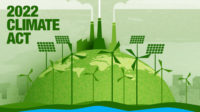Architecture for Humanity said on its ">website that, after the immediate relief needs are met, “long-term reconstruction will officially begin, but it is imperative to begin the planning now.”
The typhoon completely damaged 153,098 houses and partially damaged another 120,277, according to a ">Nov. 15 update from the Philippine government's National Disaster Risk Reduction and Management Council (NDRRMC).
USAID's Nov. 14 ">status update says that, in Tacloban, the storm "caused significant damage to the public water system, resulting in minimal availability of public water in the city and eight surrounding municipalities." USAID says that, according to the NDRRMC, about 240 municipalities were without electricity; thus, water systems that use power for pumping "may not be fully functional."
USAID reports that relief organizations are addressing the problem through "mobilizing water tanks, installing mobile water treatment units ... establishing communcal water points" and other steps.
At a Nov. 14 press converence in Manila, U.N. Emergency Relief Coordinator Valerie Amos ">said, “Tens of thousands of people are living in the open or sheltering in the remains of their homes and badly damaged public buildings, exposed to rain and wind. Many have lost loved ones and are traumatized by their experience. Our focus is now on scaling up our efforts.”
For its part, the U.S. government has mounted a multi-agency relief effort and, so far, has pledged $20 million to a U.N. worldwide appeal, which seeks $301 million for funds for the Philippines, senior Obama administration officials told reporters in a ">Nov. 13 telephone briefing.
One senior official—who, like the others, spoke on condition of anonymity—said half the $20 million is for emergency shelter, water purification and measures to prevent waterborne diseases, and the other half is for food assistance.
U.S. Government Agencies On-Site
Key players in the U.S. response include the Dept. of Defense, which has named its effort ">Operation Damayan, and the U.S. Agency for International Development.
One senior U.S. official said, “I would say we are cautiously optimistic that we are starting to turn a corner on some of the logistics challenges.” For example, the official pointed to improvements at the Tacloban airport and said an overland route had been opened to Tacloban City.
The official further said, “We’re … cautiously optimistic that that’s going to be a pretty significant game-changer because that opens up the port on the other side at Ormoc and … a whole other, much higher-volume logistical vine that we can [use to] start getting aid into Tacloban City.”
The official also said USAID had a team “on the ground in the affected zones within 24 hours of the storm hitting” to assess the situation.
In addition, family hygiene kits and heavy-duty plastic sheeting for emergency shelters arrived in Manila on Nov. 12 and were distributed the following day.
Another senior official said that, by the end of Nov. 13, DOD had delivered more than 167,000 pounds of supplies, including tarps, medical supplies and blankets.
That second official also said a Marine brigade with about 307 troops began initial on-site operations on Nov. 10, two days after Haiyan struck. They will be supplemented by the 1,000 Marines from Okinawa.
The Navy has a small Seabee detachment in Puerto Princesa, on Palawan Island. A Navy spokesman said on Nov. 14 that the unit has not yet been tasked to provide support to Operation Damayan but is “standing by and ready to provide support when called.”
He added that there were no Navy engineering-construction efforts under way in support of Operation Damayan.
The Army Corps of Engineers had not received any "mission taskings" related to the typhoon as of the afternoon of Nov. 15, a Corps spokesman said.
Other countries also have responded. Canada, for example, has contributed $5 million to support humanitarian organizations and, on Nov. 11, dispatched elements of its Disaster Assistance Response Team to Ilolio, a city in the typhoon’s direct path, government officials said.
This story was updated on Nov. 18 to include new funding and other relief-effort details announced by the World Bank Group and the Asian Development Bank.





Post a comment to this article
Report Abusive Comment